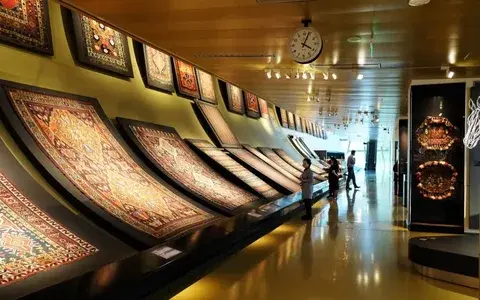Azerbaijan Carpet Museum
General Information
The Azerbaijan Carpet Museum was established in 1967.
Its current building was opened in 2014, and its design resembles a rolled-up carpet. This unique architectural project was created by the Austrian architect Franz Janz.
Address: 28 Mikayil Huseynov Street, Baku, Azerbaijan.
Collection and Significance
The museum preserves numerous rare examples of Azerbaijani carpet-weaving schools as well as works of applied decorative art.
The collection includes over 10,000 exhibits, such as carpets, textiles, metalwork, ceramics, national costumes, and jewelry.
The museum functions both as a research center and a guardian of cultural heritage, focusing on the study, restoration, and transmission of traditional carpet-weaving to future generations.
Its collection represents the Azerbaijani carpet-weaving art, which is inscribed on UNESCO’s Representative List of the Intangible Cultural Heritage of Humanity.
Why Visit
The Azerbaijani carpet is not merely a decorative object — it is a symbol of the nation’s history, worldview, and artistic values.
Visitors can learn about the entire carpet-making process — from wool dyeing and knotting to the meanings of patterns and regional styles.
The museum’s rolled-carpet-shaped architecture and its location near the Baku Seaside Boulevard make it a unique cultural and tourist attraction.
Brief Historical Background
In its early years, the Carpet Museum was housed in the building of the Azerbaijan State Museum of Art.
In 2014, it moved to a new, modern facility designed to meet international museum standards.
Today, the museum actively participates in international exhibitions and plays a vital role in promoting Azerbaijani carpet art worldwide.
























